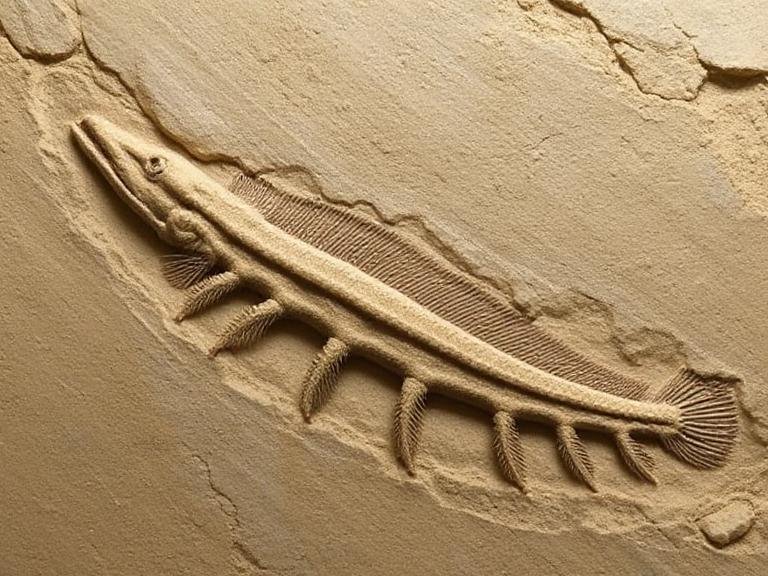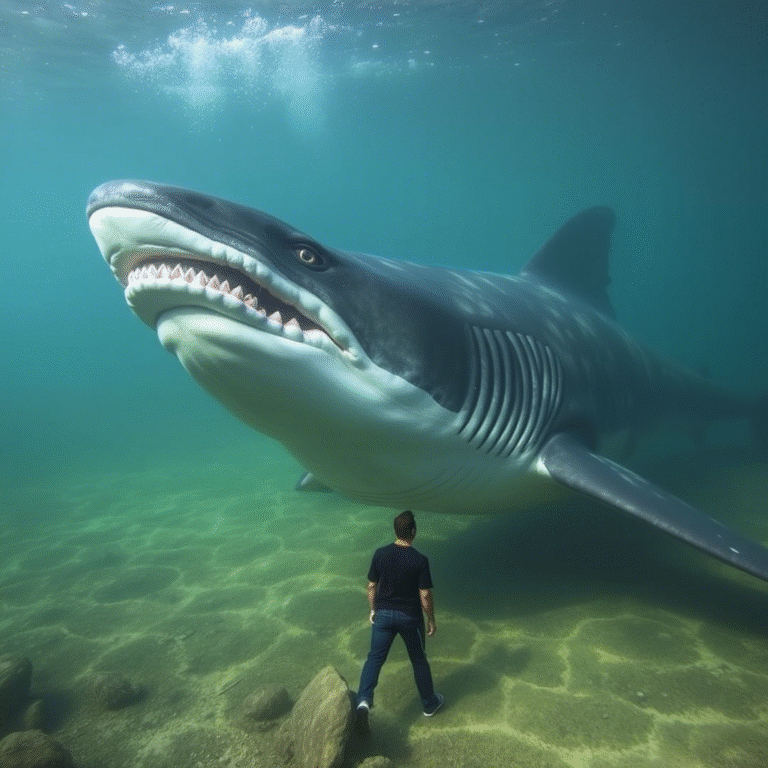
The “Sand Creeper”: New Giant Ichthyosaur Fossil Found in Germany
In what can only be described as a stroke of luck, a retired chicken farmer in New South Wales stumbled upon a 240-million-year-old fossil while collecting rocks for a garden wall — a discovery that has now become one of the most significant paleontological finds in Australian history.
The fossil has been identified as a newly named species called Arenaerpeton supinatus , or the “Sand Creeper” , and has just been officially described by researchers from UNSW Sydney and the Australian Museum .
🏡 A Fossil Found in the Unlikeliest of Places
The story begins in the 1990s, when a retired chicken farmer was gathering stones from a local quarry to build a retaining wall around his garden . Among the rocks was something far more valuable than he could have imagined — a well-preserved fossil of a prehistoric amphibian.
The fossil was eventually donated to the Australian Museum in Sydney , where it remained for years until scientists began to study it in depth. What they found was astonishing.
🦎 Meet Arenaerpeton supinatus : The “Sand Creeper”
The newly identified species has been named Arenaerpeton supinatus , which translates to “supine sand creeper” — a nod to the way the fossil was found lying flat in the rock.
According to Lachlan Hart , a PhD candidate at UNSW Science and researcher at the Australian Museum, the fossil includes most of the skeleton , and remarkably, the outline of its skin is also visible.
This is an incredibly rare find, especially for such an ancient creature.
🌊 Life in the Triassic Period
Arenaerpeton lived in freshwater river systems that once flowed through what is now the Sydney Basin , during the Triassic period — a time when dinosaurs were just beginning to appear.
Hart believes the creature likely hunted ancient fish , such as Cleithrolepis , though much about its ecosystem remains a mystery.
“It’s fascinating to think that this animal was swimming in rivers long before the age of the dinosaurs,” Hart explains.
🦴 A Fierce and Mighty Amphibian
At first glance, Arenaerpeton bears a strong resemblance to the modern Chinese Giant Salamander , especially in the shape of its head.
But according to Hart, it was much more heavily built , as suggested by the size of its ribs and the preserved soft tissues.
“It also had some pretty impressive teeth,” he adds, “including a pair of fang-like tusks on the roof of its mouth — definitely not something you’d want to meet in the dark!”
At about 1.2 meters long , Arenaerpeton was unusually large compared to other amphibians of its time, which were mostly small in size.
🧬 Surviving Mass Extinctions
The group to which Arenaerpeton belongs — temnospondyls — was widespread before and during the age of the dinosaurs. Some of its relatives even survived for another 120 million years , eventually growing to enormous sizes.
“The fact that these animals lived through two major mass extinction events suggests that their evolution — especially increasing in size — might have played a role in their survival,” says Hart.
🏛️ A Major Discovery for Australian Paleontology
Dr. Matthew McCurry , Senior Lecturer at UNSW’s School of Biological, Earth and Environmental Sciences (BEES) and Curator of Palaeontology at the Australian Museum, describes the find as a landmark in Australian fossil history .
“This is one of the most important fossils discovered in New South Wales in the last 30 years,” says Dr. McCurry, who co-authored the study.
“It gives us a rare glimpse into life during the Triassic and represents a vital part of Australia’s natural heritage.”
🧭 From Backyard to Breakthrough
What started as a simple gardening project turned into a scientific milestone . The discovery of Arenaerpeton supinatus reminds us that sometimes, history is hiding just beneath our feet — all it takes is a little curiosity and a lucky break to uncover it.
The findings on Arenaerpeton supinatus have now been officially published in the Journal of Vertebrate Paleontology , marking a major milestone in the study of ancient amphibians.
Authors:
Lachlan J. Hart, Bryan M. Gee, Patrick M. Smith, and Matthew R. McCurry
Published: August 3, 2023
This research not only expands our understanding of temnospondyl evolution but also highlights how unexpected discoveries can reshape the scientific narrative — sometimes starting with nothing more than a pile of rocks in a backyard.





